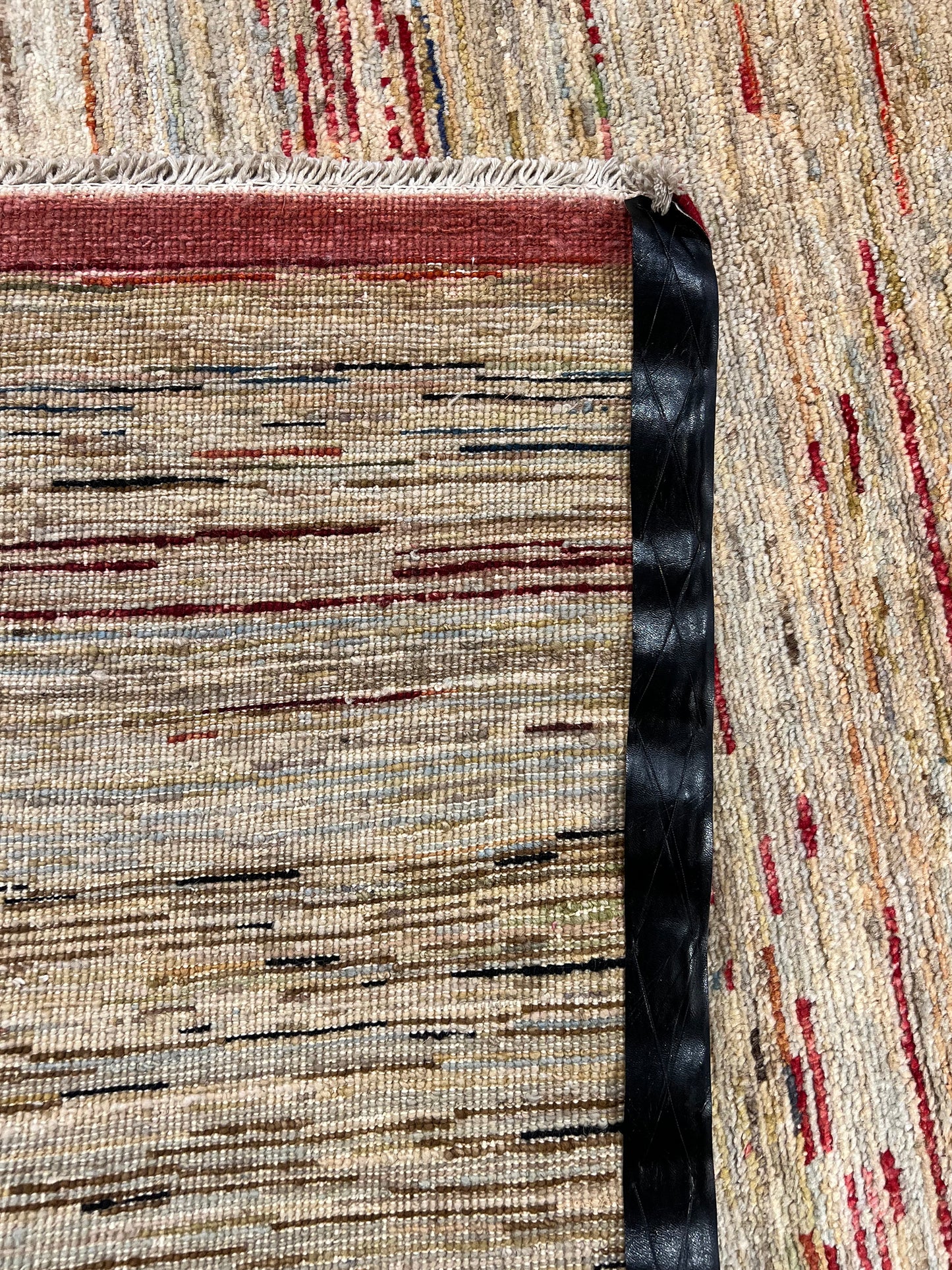Luri Wool Carpet 7'9" x 4'11"
Overview
A Brief History of the First Origins of Luri Carpets
 Luri carpets, called in Farsi Gabbeh or Gabba have been historically hand-knotted in Iran but now are commonly also made in Pakistan and Afghanistan. Historically, they have been a traditional variety of Persian carpet made by nomadic people in southern-Persia in the Iranian province of Fars. Luri is the the Kurdish name which is also pronounced as "Gava" in Kurdish. Luris are popular among tribes of the Zagros mountains including Kurdish, Luri and Qashqai tribes. Although crude, these rugs appeal to collectors of tribal weavings because of their simplicity and naive charm. This type of rug is usually made up of 100% pure wool and is typically dyed with vegetable dyes. Luris are usually crafted by women. This type of carpet is traditionally far thicker than other types of carpets. In fact, some Luris can reach up to 2.5 cm in thickness. The designs of contemporary Luris date back to the 19th century, demonstrating the respect shown by oriental weavers for part traditions. Luri motifs are usually simple and their fields commonly contain small animals and a few geometric shapes such triangles, diamonds or squares. These days weavers from Pakistan are making Luris too. For example, they are producing natural-dyed, hand-spun Luri rugs in the Balochistan area in Pakistan. The Balochistan province of Pakistan neighbors Iran and shares the persian language/culture. To learn more about iranian rugs, visit our Persian Rugs section.
Luri carpets, called in Farsi Gabbeh or Gabba have been historically hand-knotted in Iran but now are commonly also made in Pakistan and Afghanistan. Historically, they have been a traditional variety of Persian carpet made by nomadic people in southern-Persia in the Iranian province of Fars. Luri is the the Kurdish name which is also pronounced as "Gava" in Kurdish. Luris are popular among tribes of the Zagros mountains including Kurdish, Luri and Qashqai tribes. Although crude, these rugs appeal to collectors of tribal weavings because of their simplicity and naive charm. This type of rug is usually made up of 100% pure wool and is typically dyed with vegetable dyes. Luris are usually crafted by women. This type of carpet is traditionally far thicker than other types of carpets. In fact, some Luris can reach up to 2.5 cm in thickness. The designs of contemporary Luris date back to the 19th century, demonstrating the respect shown by oriental weavers for part traditions. Luri motifs are usually simple and their fields commonly contain small animals and a few geometric shapes such triangles, diamonds or squares. These days weavers from Pakistan are making Luris too. For example, they are producing natural-dyed, hand-spun Luri rugs in the Balochistan area in Pakistan. The Balochistan province of Pakistan neighbors Iran and shares the persian language/culture. To learn more about iranian rugs, visit our Persian Rugs section.
Sources and inspiration: Bérinstain, Valérie, et al. L'art du tapis dans le monde (The art of carpets in the world). Paris: Mengès, 1996. Print.; Jerrehian Jr., Aram K.A. Oriental Rug Primer. Philadelphia: Running Press, 1980. Print.; Herbert, Janice Summers. Oriental Rugs, New York: Macmillan, 1982. Print.; Hackmack, Adolf. Chinese Carpets and Rugs, Rutland and Tokyo: Tuttle, 1980. Print. ; De Moubray, Amicia, and David Black. Carpets for the home, London: Laurence King Publishing, 1999. Print.; Jacobsen, Charles. Oriental Rugs A Complete Guide, Rutland and Tokyo: Tuttle, 1962. Print.; Bashir, S. (n.d.). Personal interview.; Web site sources and dates of consultation vary (to be confirmed). Without prejudice to official usage.
- Choosing a selection results in a full page refresh.
- Opens in a new window.



 Runner Rugs
Runner Rugs 2x3 Area Rugs
2x3 Area Rugs 3x5 Area Rugs
3x5 Area Rugs 4x6 Area Rugs
4x6 Area Rugs 5x7 Area Rugs
5x7 Area Rugs 6x9 Area Rugs
6x9 Area Rugs 8x10 Area Rugs
8x10 Area Rugs 9x12 Area Rugs
9x12 Area Rugs 10x14 Area Rugs
10x14 Area Rugs Round Rugs
Round Rugs Bath Mats
Bath Mats Doormats
Doormats 12x15 Area Rugs
12x15 Area Rugs




















